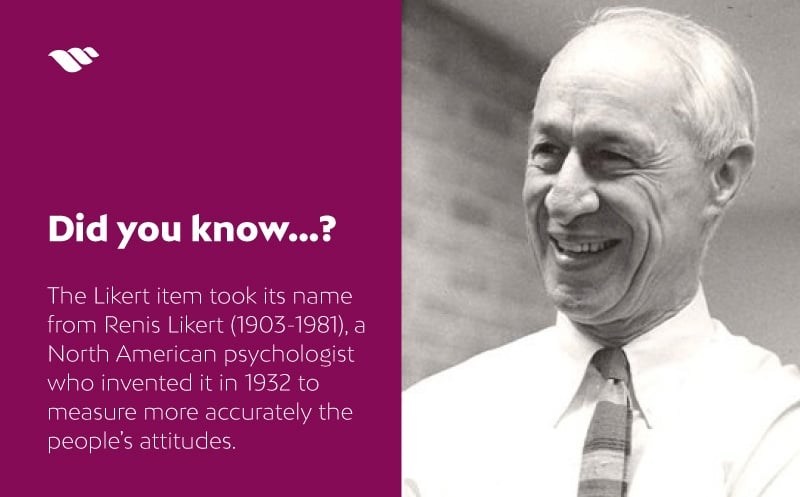The Likert scale is known to be one of the most popular and used items in surveys. In contrast to dichotomous questions with yes/no answers, the Likert scale allow us to measure attitudes and to know the degree of compliance the respondent has about any information we propose to him.
It results especially useful when we want someone to put the answer into context. In this regard, response categories will be useful to capture the respondent feelings’ intensity towards that affirmation.
A Likert example would be the following statement: “I’m satisfied with Lexcorp’s company products” and the rating scale:
Likert item vs Likert scale
Strictly speaking, the last question is a Likert item. Meanwhile, if we show several Likert items and we add up each respondent valuation, we will get a Likert scale. Important: we just need to add the item valuations with a similar content.
Item Likert types
We can use the Likert item to measure different attitudes in a respondent. For instance, we can use it to discover:
- The level of agreement with an affirmation
- The frequency we do an activity
- The importance level which is attributed to certain factor
- A service, product or company valuation.
- The probability to make a future action.
How many levels should an item have?
There’s no general agreement about this between researchers. Probably, the most used item is the one which has 5 levels; but also 4, 7 and 10-levelled items are used too. However we know that adding more levels produces diverse valuations. For example, for a 5 points item, the respondents usually avoid the most extreme options, obtaining just a little bit of variation (this is known as central tendency bias).
In the other hand, there are some researches concluding that, from 8 levels on, the results are the same as for 8, so adding more levels won’t produce more result variation. Then, the optimal items are the ones with 7 or 8 levels.

How to process the results?
Once the questionnaire is over, each item can be analyzed either separately or, in some cases, the answers of a Likert items set can be add up to obtain a total value. The assigned value to each position is random and the researcher/ survey designer will be the one who sets it.
Once we got it, we could calculate the average, median and trend. The median and the trend are the most interesting metrics because if we handle a lot of categories as “agree” or “disagree” when interpreting the numerical average it won’t give us too much information.
Normally, in commercial research, data obtained are classified in an interval, not as ordinal data. However, we should point out that scientific literature has a huge debate about it.
Item Likert advantages
- From the design’s point of view, is a scale easy to build.
- From the respondent’s point of view, they can easily graduate their opinion for complex statements
- In the Internet it works pretty well: is very visual, so the respondent can perform comparisons between items and adjust its answer easily.
Item Likert disadvantages
- On one side, two people can get the same value in the Likert scale by having chosen different options.
- Is difficult to treat neutral opinions as “Neither agree or disagree”.
- Respondents tend to agree to the statements showed. This phenomenon is called acquiescence bias.
We reccomend
- A good Likert scale should be symmetrical, that is to say, it has to include the same number of positive and negative categories.
- You should include a medium point in the scale so the respondents can select this option in case of indecisión of neutrality.
- If we use several scales along the questionnaire, is interesting they are equal or very similar each other. That is to say, positive valuations should be in the same area and we should have the same number of levels (to avoid confusing the participant)
- Some researchers point out the Likert scale is not the best way to know an opinion because it can be situated just in the space between two options. For that matter, a solution offered by the online technology is to do the valuation using an slider, so the respondent can express his opinion much more accurately.
- Finally, as an Likert scale alternative, we propose to use specific scales which have higher validity and statistic quality.
If you want to expand your knowledge, we recommend you to read:
Wikipedia – Likert scale (ENG)
The likert scale por Ray Poynter
Four things you probably didn´t know about Likert scales
How’s your experience using the Likert scale? Which advantages or disadvantages have for you? I encourage you to follow the conversation in the comments below.





